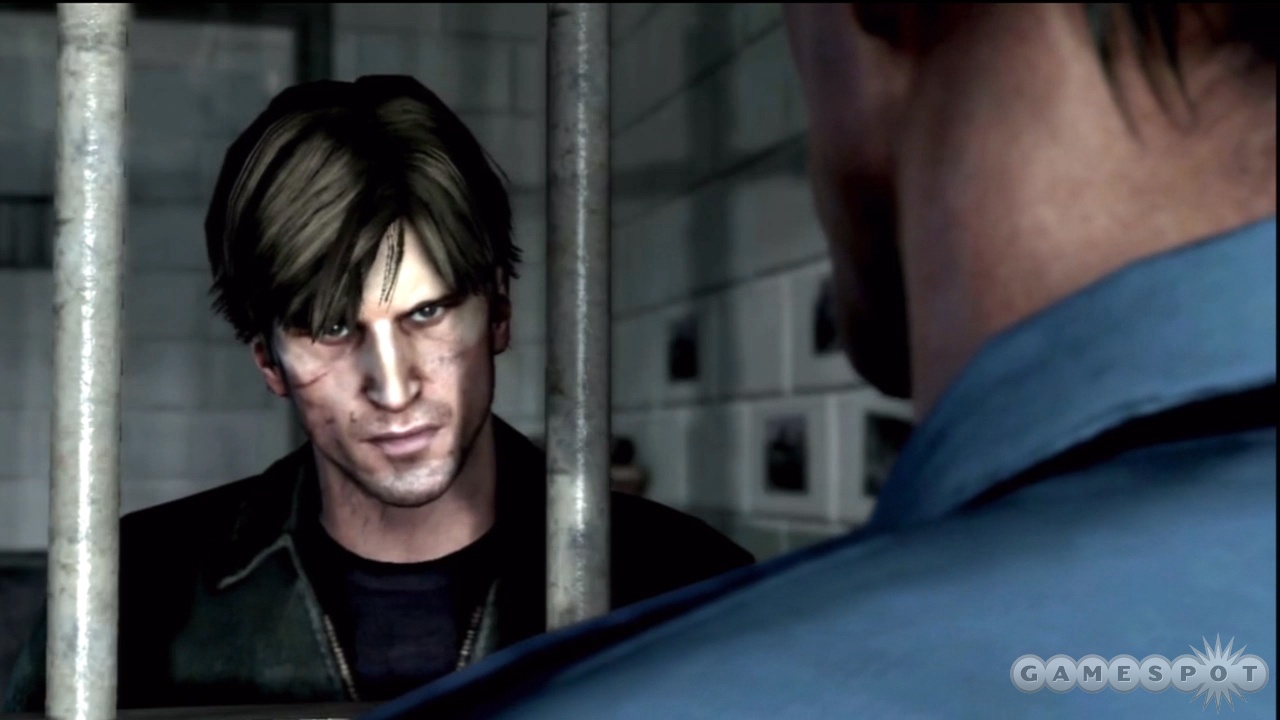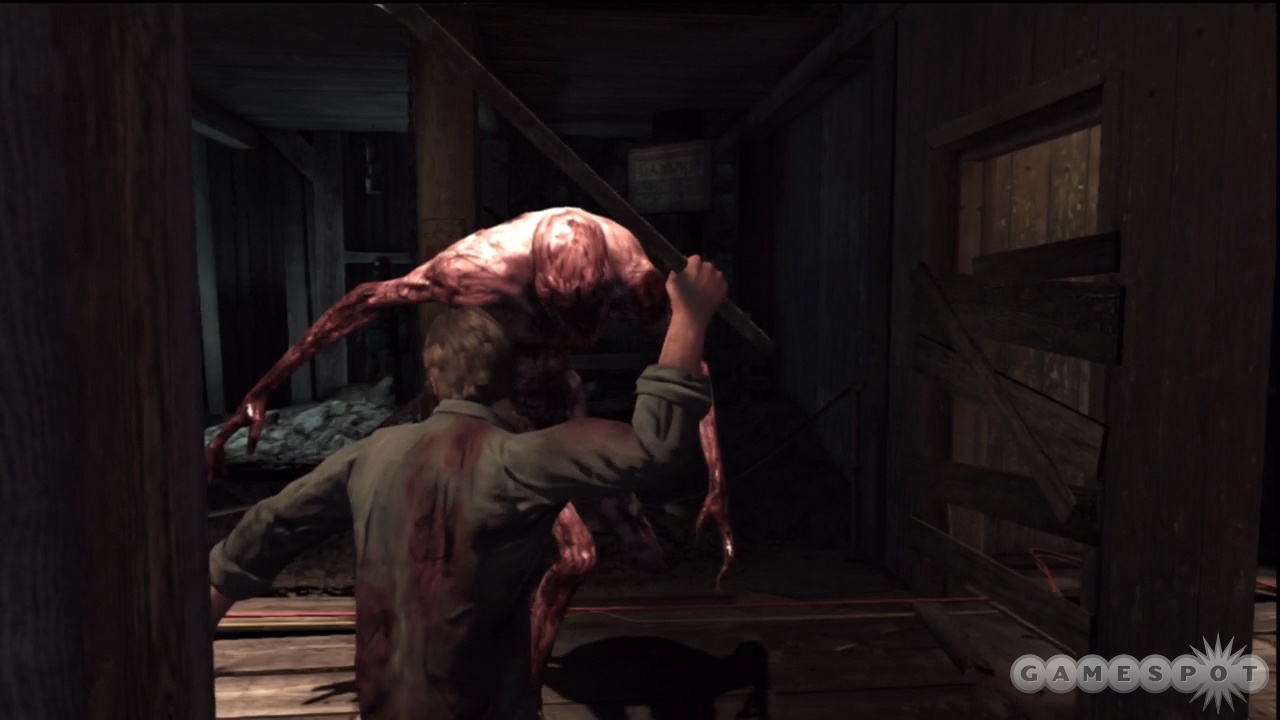Silent Hill: Downpour is a celebration of gaming's most notorious ghost town. It taps into the madness and surrealism that has made this series legendary, and presents Silent Hill as a more robust location than ever before. Most of the fundamentals are still intact, but developer Vatra Games has not shied away from making some stark changes to this American nightmare. Some fit well into the Silent Hill formula, while others are a little off the mark.
From the outset, Murphy Pendleton, the protagonist, is painted as a morally ambiguous character. He is a prisoner at Ryall State Prison, but the circumstances of his incarceration are unclear. When Murphy's prisoner transport bus crashes in the outskirts of Silent Hill, you're not sure if he is escaping wrongful imprisonment or just fleeing the long arm of the law. Occasional morality choices let you shape Murphy's character, and can give identical scenes an entirely different meaning.
Within the game's opening acts, it becomes clear that Downpour is a new Silent Hill game, rather than an imitation of an old one. It keeps some elements from series' history, but isn't afraid to change others. Fog is a good example: in previous games, it was thick and obscuring. Here, it's less prominent and is upstaged by the constant rain. While it's raining, enemies become more numerous and hostile. An element that merely enhanced the ambiance has evolved to include dynamic repercussions.
As in previous games, your time in Silent Hill is split between the normal world and the other world. The normal world covers most of the combat, exploration, and puzzle-solving, while the other world is reserved for specific encounters. Combat in Downpour borrows some from Silent Hill: Homecoming, though it is not as exaggerated. Often in combat, you face down a group of enemies in an open area. Large environments afford Murphy access to more weapons, while the monsters gain the advantage of flanking.

In Downpour, Murphy can only carry one melee weapon at a time, so he is constantly cycling through them. Fire axes, chairs, lamps, and more are littered about, but they eventually break apart. This weapon degradation emphasizes how desperate combat encounters are for him. Murphy may start a fight with a garden rake but end with a puny stick. Unarmed attacks are an option, but they do almost no damage and you can't block while unarmed. If you're lucky enough to find a firearm, Murphy can pocket it as a secondary weapon. Guns are extremely powerful, but ammo is scarce.
Additional design choices add complexity to the combat, but in doing so, they call more of your attention to the faults. In early Silent Hill games, combat was deemphasized through simplistic controls and stellar sound design. With Downpour, there are more ways Murphy can attack--or be attacked--in a fight. You spend more time thinking about combat, and the weaknesses therein become more pronounced. Striking an enemy still feels stiff, and against most enemies, the fights fall into predictable rhythms. When monsters attack in groups, one usually hangs back and temporarily disables Murphy with a sound-based attack. It's a novel tactic, but it's recycled throughout nearly the entire game.
Of course, combat isn't all you do in Downpour. The town of Silent Hill has a touch of open-worldness and is filled with puzzles and side quests to discover. The side quests are well tailored to the game's setting and imply there was once life in this desolate town. They include investigating a domestic murder, searching for a missing child, and venturing inside a collection of historic films. These optional quests are a smart addition and encourage, as well as reward, exploration.

In the other world, you do a lot of running. Early on, you are introduced to a glowing ball of energy that wants to chase Murphy down and change him from a solid form into a liquid. Murphy's escape takes him through a maze of hallways lined with obstacles that can be knocked over to slow down the being's advance. Thankfully, one wrong turn doesn't mean death. Incorrect routes loop back to the main path, though you will take some damage from the formless horror. These sections help break up the game's slow pace with high-speed action that's appropriate for the setting.
The Silent Hill series is famous for its music and sound design. In previous Silent Hill games, the music could make the most mundane encounters intimidating. It was an oppressive mixture of industrial noise, radio static, and monster cries. In contrast, Downpour downplays its encounters to the point where most fights are in near silence. Music is largely absent, and while there are still radio and monster effects much of their impact is gone. Sometimes this subtle approach is used to great effect, but too often it makes combat feel commonplace.
When all of the elements come together, they can create some brilliant moments. A great example of this is the Hansel and Gretel sequence. Your first task is to explore the area and collect items to put on a play of Hansel and Gretel. Once all of the items are recovered, there is a simple puzzle that explains how these items work together. Correctly solving the puzzle involves dimming the lights, playing the music, and producing the correct sound effects for the performance. And when you look up from your duties, it's revealed that you've been transported into the scene itself.
Thunder and lightning crash overhead, muffling the eerie hum of an old gramophone. The sounds of children screaming can be heard from the now very-real wood cabin, separated from you by a dark forest. Naturally, it's difficult to see through the rain until a flash of lightning reveals the hulking form of an enemy. There's no fanfare or blaring music; it's just standing there, off in the distance, waiting. You're initially surprised, and then you feel the looming dread of the coming fight. The sequence progresses beyond that, but taken as a whole, it combines traditional Silent Hill puzzles with a bit of combat within a great set piece. It successfully channels the surprise and anxiety that has made this series great.
Unfortunately, almost all of Downpour's accomplishments are marred by some persistent frame rate and stuttering issues. They occur throughout nearly the entire game but are most noticeable in the larger environments, such as the town itself. At times, they are excusable, such as when the game is loading a new environment or autosaving. But when simply looking from side to side causes small hiccups and screen tearing, they become real issues. This happens much less often in smaller, interior spaces, but it is something you have to endure throughout, even after installing the game to a hard drive.

Silent Hill: Downpour makes some questionable tweaks to the established formula, but those decisions distinguish it from the rest of the series. You may not agree with all of Vatra's choices, but they succeed in making an old town feel new again. And when it's the eighth installment in the series, that is quite an accomplishment.